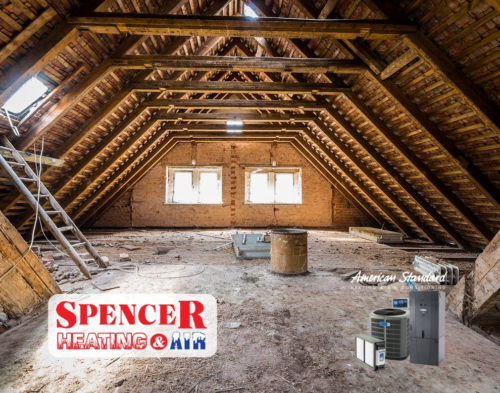How Attic Ventilation Will Protect Your Home This Winter
Throughout the cold months, proper ventilation can make the difference between a stuffy, uncomfortable home and a warm pleasant indoor environment. Attic ventilation, specifically, is crucial for protecting your roof from moisture damage and preserving enjoyable indoor air quality.
Why is attic ventilation necessary?
Attic ventilation protects your home from troublesome issues that can threaten your home’s well-being during the cold season. In particular, it safeguards your roof against:
- Growth of mold
- Damaging ice
- Rotting wood
- Ice dams
- Popped shingles
- Warping of roof decking caused by moisture
Heat rises, so when your heating system is blasting throughout the winter, your attic feels it most of all. With this heat comes moisture, so if your attic is not well-ventilated that moisture can permeate the wooden structures of your home causing a variety of issues, including some that are very dangerous like toxic mold and mildew growth.
Additionally, during the winter your attic can serve as a warm, dark and damp environment for rodents and insects who seek out these places in cold climates.
If you would like to protect your family from these harmful contaminants in your home, we suggest contacting Spencer Heating & Air for a consultation regarding attic ventilation. In the South especially, humidity can accelerate the damages caused by moisture accumulation so seeking out solutions is highly recommended.
What are attic ventilation solutions?
We recommend one square foot of ventilation per every 300 cubic feet of attic space with a 1:1 ratio of intake and exhaust vents. This will allow for proper airflow.
-
Intake Vents
There are three main types of intake vents that can assist airflow within your attic during the winter. First, under-eave vents which are continuous vents placed underneath your home’s eaves.
Oftentimes, they work with the second type of vents, rafter vents, which create airways to the under-eave vents. These rafter vents are installed along the attic’s rafters where the floor and ceiling of the attic meet.
Third, there are gable vents that are installed at the roof’s highest point in the gable, hence their name. These can be a stylish option because they can be painted in a number of ways to match your home’s style. Gable vents are also versatile because they can be both intake or exhaust vents depending on the direction of the wind.
-
Exhaust Vents
Like intake vents, exhaust vents come in multiple forms. As stated, gable vents can sometimes serve as exhaust vents. Ridge vents serve a similar purpose, working as exhaust vents in some attics.
Another prominent form of exhaust vents are turbine vents which consist of a small fan that turns with the wind. Turbine vents are particularly helpful in attics because they suck your attic’s moist, hot air outdoors.
-
Attic Ventilation Fans
Attic ventilation fans are another solution that function similarly to the turbine vents. They force out hot, moist air. However, attic ventilation fans achieve this task by drawing in cool, outdoor air and expelling the warm air through the roof ventilation system. This prevents both external ice issues and internal moisture issues.
It is important to note, attic ventilation fans require electricity to operate, making it a more costly, environmentally-taxing solution than relying on other ventilation.
Overall, it is important to be proactive about attic ventilation in order to avoid the costly and dangerous consequences of keeping a hot, damp attic. In order to find an attic ventilation system that works best for you and your family, we urge you to contact us at 334-887-9020 or online at https://spencerheatingandair.com/! Remember that Spencer Heating & Air is here to help!
Spencer Heating & Air is fully licensed and insured serving the Auburn-Opelika area. We offer round the clock emergency service.






